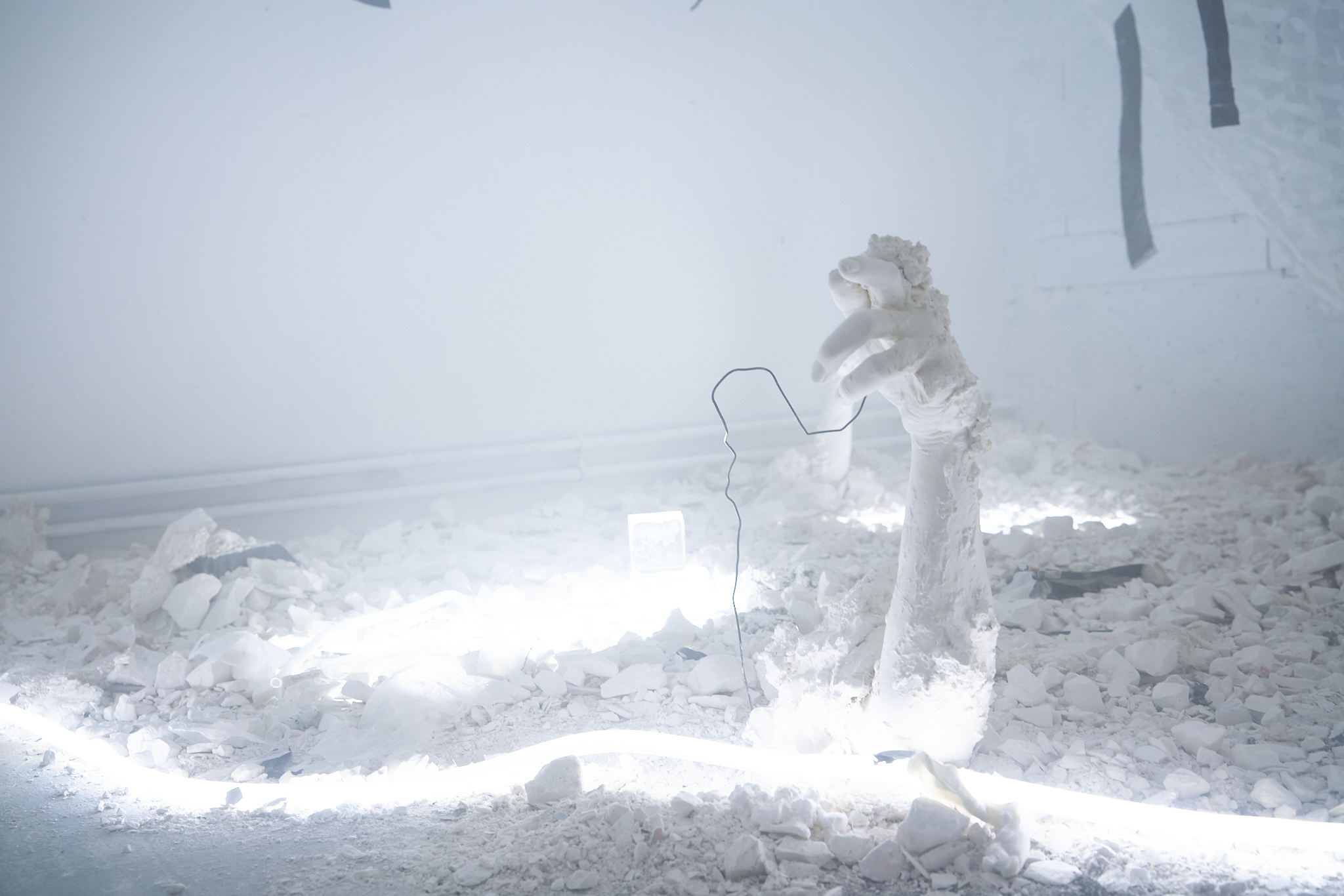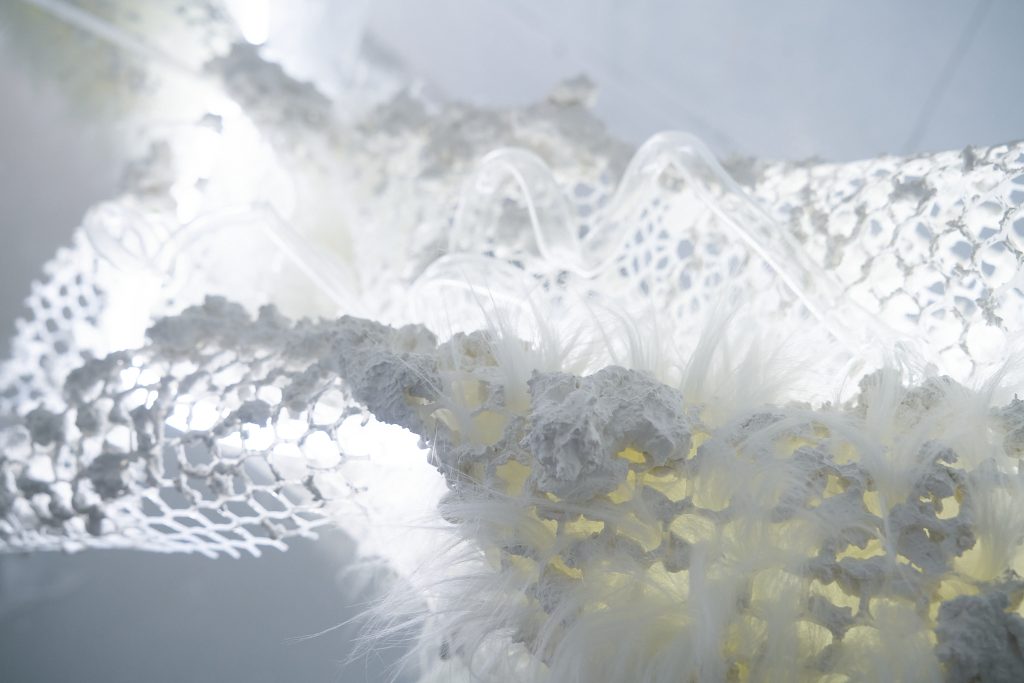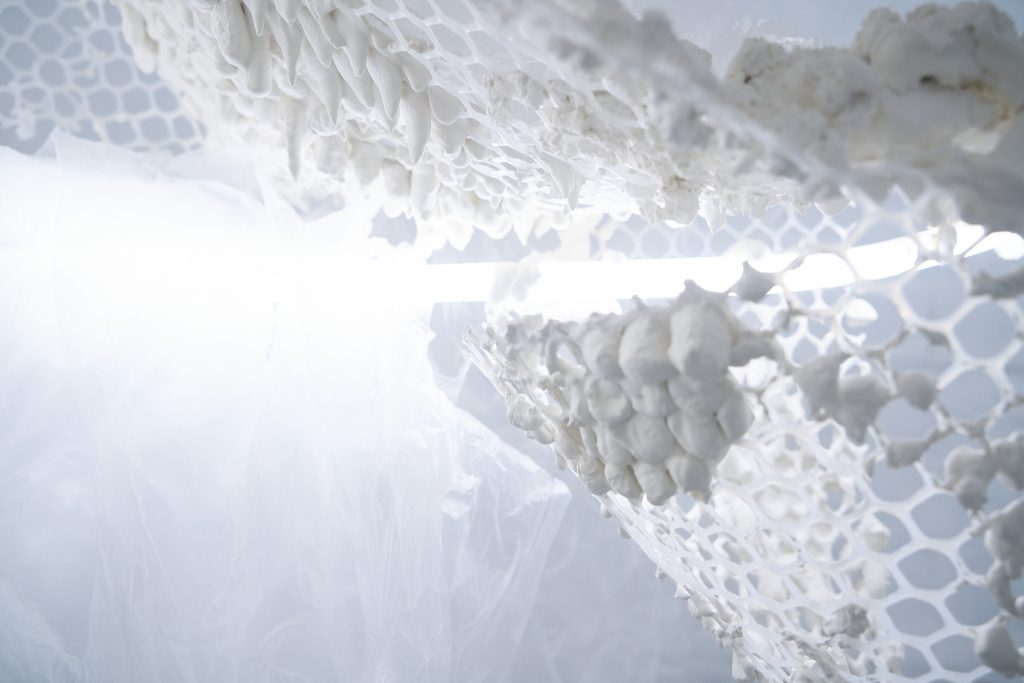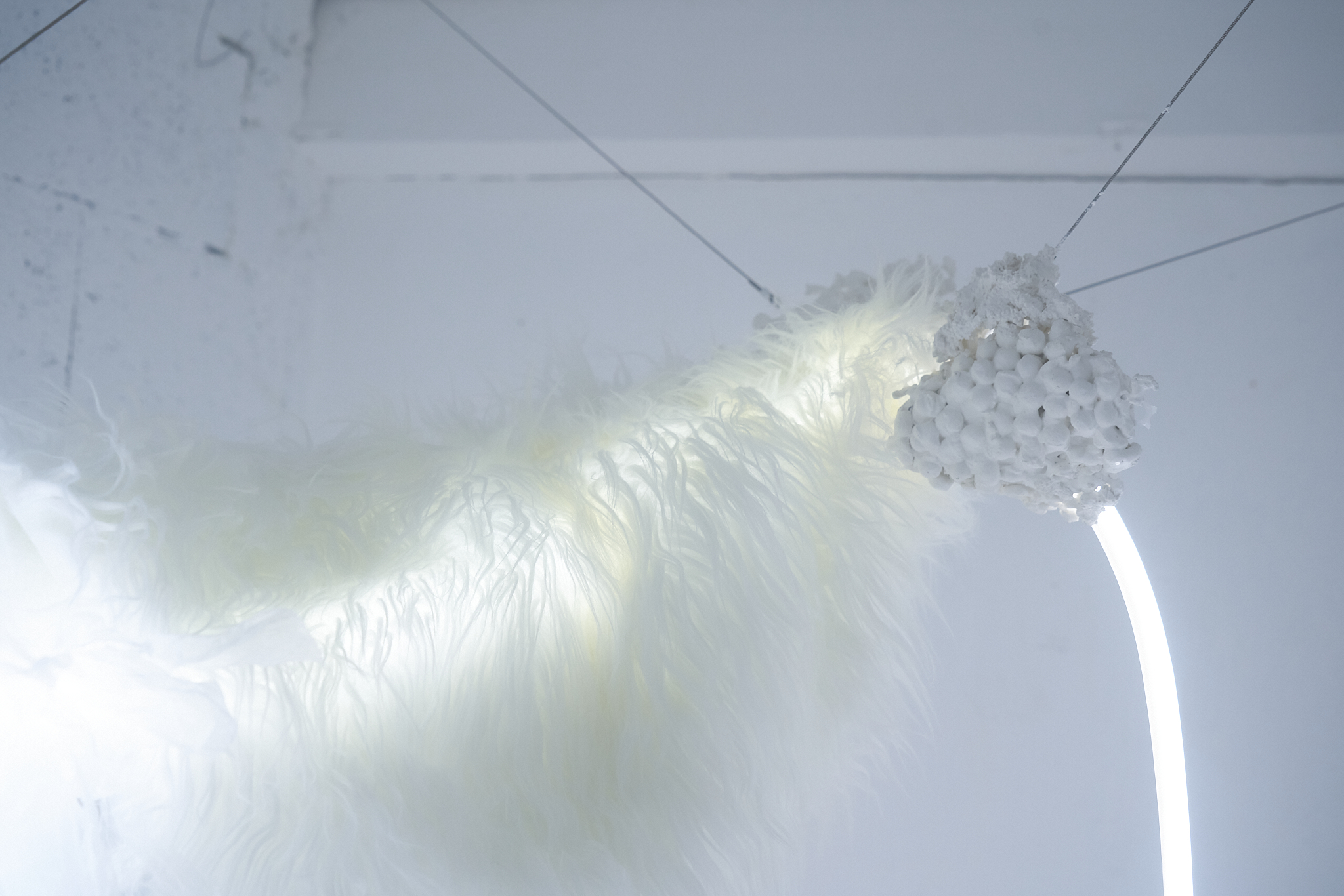Blueprint Orchid Plan Project (Ongoing) – Scene 01: Refuge Zone
2024
As an important part of the diploma exhibition, this project is an experimental attempt at presenting my speculative fiction narrative. It integrates stage installations, video, and automated music devices (thanks to Moog DFAM and MengQi WING PINGER) in non-exhibition spaces such as escape routes and adjacent printing rooms. In the fictional text I have written, I emphasize a scenario where humanity completely hands over control of the surface ecosystem to a vast, algorithm-based heterogeneous network, which becomes the full-time agent of humanity. This leads to the development of a fragmented narrative perspective dominated by probes and machines, depicting a landscape observed in the absence of humans. This diploma serves merely as a scene construction test within the fictional narrative, with a construction period of 5 days. The refuge landscape, built mainly with industrial materials (such as plastic and plaster), spans two floors and was still incomplete on the day of the presentation, marking the first time it was presented through means other than images and text.
Blueprint Orchid Plan Project promo video (3′30″)
2023
3D images, serving as a demo for game development, present a series of perspectives from the probes, non-human protagonists within the fictional narrative. In the logic of actual machines, the concept of images is a set of digitized information, fundamentally different from the way organic sensory systems understand images. By eliminating the human-centric perspective as much as possible, the envisioned observational method is based on a cross-system of multi-sensor fusion and a vast real-time algorithm network. All image capture is about recognizing and extracting information matrices, with this purely functional aesthetic no longer compromising the readability of the conveyed information. Based on this, my narrative expression also attempts to avoid following the habit of linear reading, requiring the audience to “encounter” and use the fragments they gather to construct and imagine the ongoing “story.”
Selection of the speculative fictional background of my story
In the post-Anthropocene era, facing environmental mutations and challenges related to species perpetuation, humans have considered creating a continuous online information system and remote sensing network with the aim of gathering and structuring a comprehensive biological record of the human era. They have developed a range of biomimetic detection devices, driven by algorithms, specifically adapted to conditions in the deep sea, characterized by high pressures and low temperatures resulting from environmental mutations. One of these devices is inspired by krill (a marine invertebrate, an important species at the bottom of the food chain), and is designed as a small bait trap. It is capable of attracting large fish through its bioluminescence. Thanks to the high-pressure resistance and low degradability of its inorganic materials, it can remain in the fish’s stomach for a certain period, thus collecting data on biological samples. The series also includes a spawning inducer, which can encourage organisms from the deep sea to be active in its semi-enclosed environment, thereby capturing their activity trajectories and biological information. Other parasitic biomimetic products are also proposed, attracting invertebrates to parasitize them and triggering the internal program of the biomimetic product (a network of neuronal coding activated by the animal’s neurons, altering the parasite-host relationship and influencing the parasite’s behavior) in order to accomplish the information collection mission. All these products are deployed with the aim of successfully completing the tasks of collection, converting samples into data, and uploading them to the human-era biological record network. It is envisaged that these detection devices will be fully deployed and operational by the end of the post-Anthropocene era…
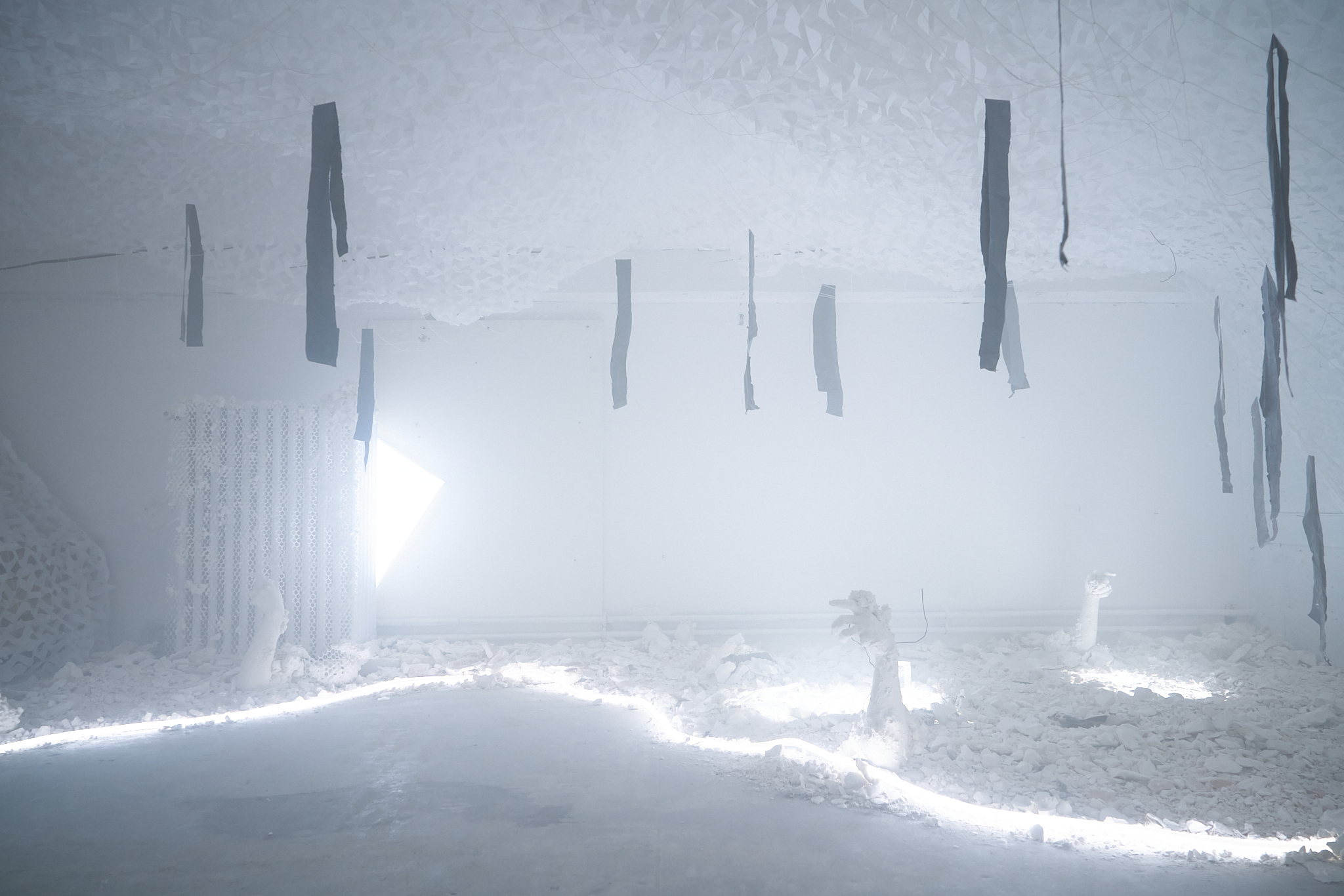


The exhibition venue includes a printing room with numerous computers and an adjacent temporarily abandoned space leading to a small corridor connected to a spiral emergency exit staircase.
During the installation process, taking into account the actual function of this space, I spent a week creating an immersive scene within this area and constructing a fictional post-apocalyptic ‘shelter’ based on the architectural structure of the entire space.
During the presentation, a fog machine was used to blur all details inside the space.

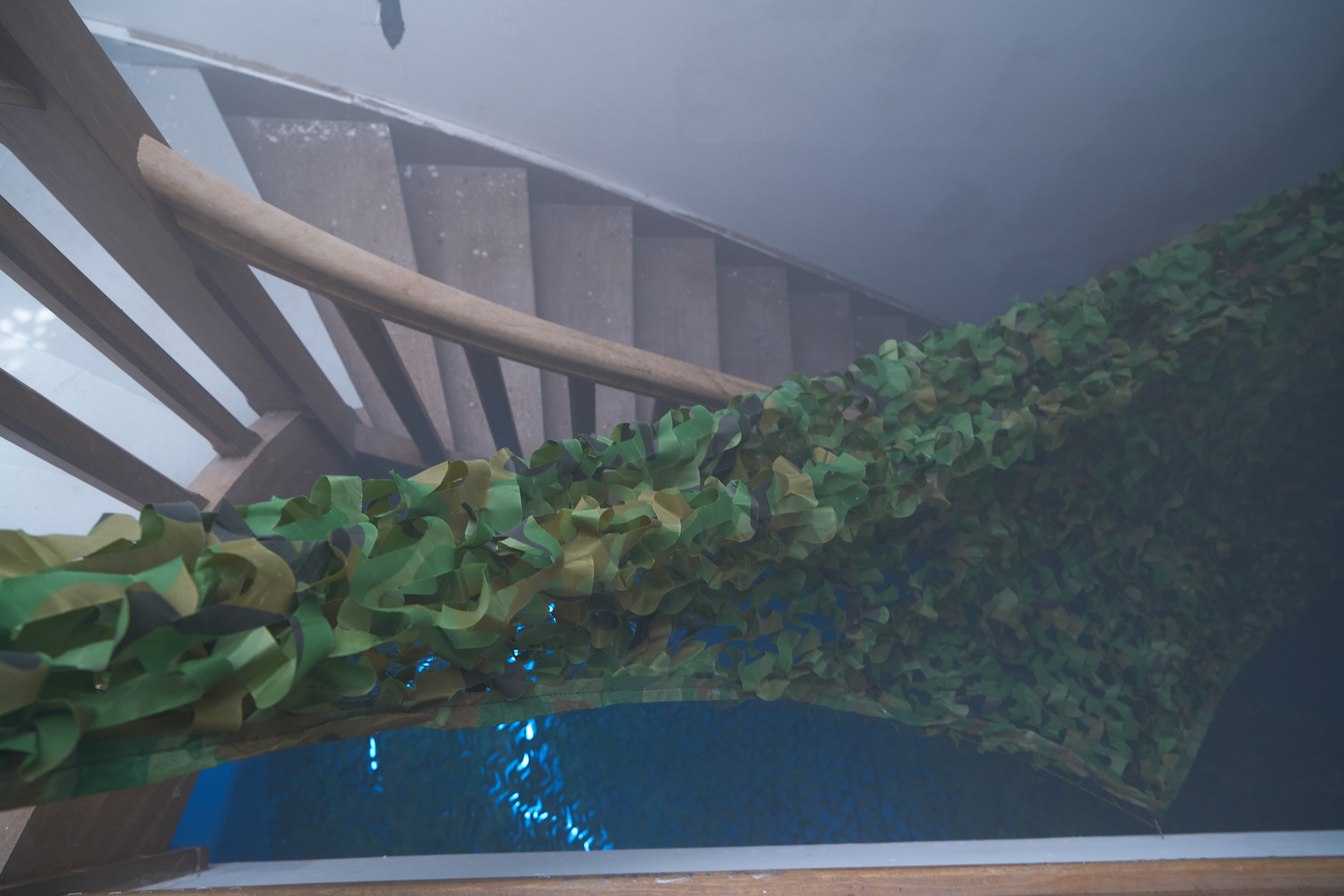


Dimensions: Flexible
Materials: Camouflage fabric, plastic mesh, transparent garbage bags, organza fabric, mosquito netting, plastic beads, nylon thread, metal wire, metal hooks, plaster, duck feathers, LED neon flex lights, silicone industrial, recycled trashs, fog machine and other industrial materials.
